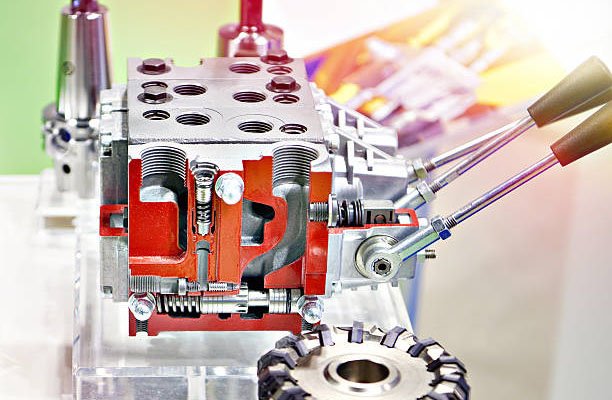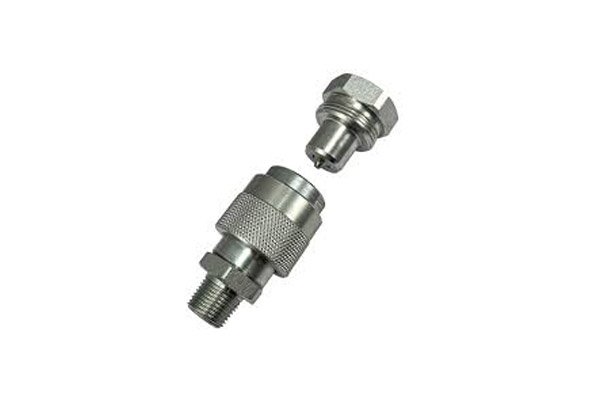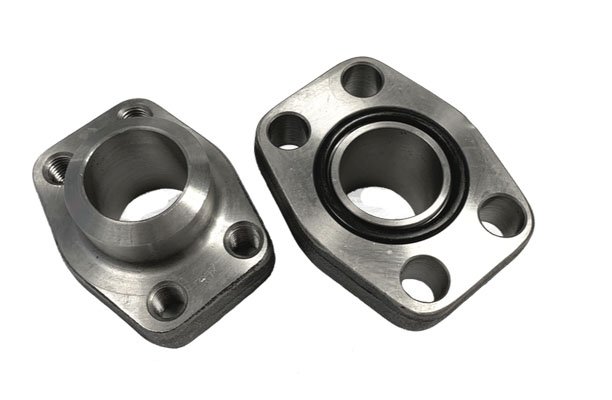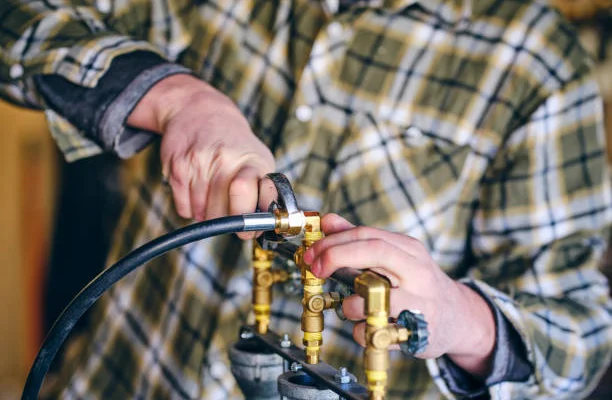Introduction to Hydraulic Flanges
Hydraulic Flange Standards define the specifications for these critical components used in high-pressure fluid systems to connect pipes, tubes, hoses, and other equipment. By adhering to these standards, hydraulic flanges ensure a secure, leak-proof seal that maintains system integrity and supports efficient fluid transfer. Compared to threaded or welded joints, standardized flanges simplify installation, maintenance, and replacement—especially valuable in complex hydraulic setups.
In modern hydraulics, the use of standardized flange systems is essential to handle varying pressures, temperatures, and environmental conditions. Whether it’s industrial manufacturing, oil and gas, or heavy machinery, hydraulic flanges play a vital role in maintaining operational efficiency and safety.
Why Hydraulic Flange Standards Matter
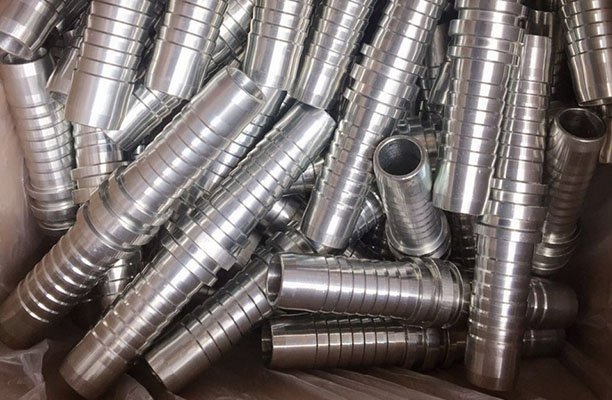
Standardization in hydraulic flange design ensures compatibility across different systems and manufacturers. This is particularly important when integrating equipment from global suppliers or retrofitting existing systems. Using non-standard or mismatched flanges can lead to misalignment, leaks, and catastrophic failure under high pressure.
Moreover, following recognized flange standards enhances workplace safety by ensuring that the connections can handle the required pressures and loads. Standardized flanges also simplify procurement, maintenance, and system upgrades, reducing downtime and costs.
Overview of Major Hydraulic Flange Standards
Globally, several key organizations have established hydraulic flange standards that govern dimensions, materials, pressure ratings, and installation methods. The most recognized among them include:
- SAE (Society of Automotive Engineers): Primarily used in North America, known for SAE J518 Code 61 and Code 62 standards.
- ISO (International Organization for Standardization): A global standard encompassing ISO 6162-1 and ISO 6162-2 for hydraulic flanges.
- DIN (Deutsches Institut für Normung): The German standard, particularly DIN 2353, popular across European markets.
- JIS (Japanese Industrial Standards): Widely adopted in Asia, including standard JIS B 8363.
Each standard has unique characteristics tailored to regional preferences, manufacturing practices, and industrial applications.
SAE Hydraulic Flange Standards
The SAE (Society of Automotive Engineers) sets widely adopted hydraulic flange standards in North America. Engineers most commonly use SAE J518 Code 61 and Code 62 in medium- and high-pressure hydraulic systems, respectively.
- SAE Code 61: Designed for systems up to 3000 PSI. Commonly used in agricultural and industrial equipment.
- SAE Code 62: Suitable for high-pressure applications up to 6000 PSI, found in heavy machinery and offshore rigs.
These flanges are made from materials such as carbon steel or stainless steel and have bolt-hole patterns that match their pressure ratings. They feature O-ring grooves for optimal sealing and are available in sizes ranging from ½ inch to several inches in diameter.
ISO Hydraulic Flange Standards
The International Organization for Standardization (ISO) has harmonized hydraulic flange specifications with ISO 6162-1 and ISO 6162-2, closely mirroring SAE standards.
- ISO 6162-1: Corresponds to SAE Code 61, covering flanges for 3000 PSI systems.
- ISO 6162-2: Aligns with SAE Code 62, intended for 6000 PSI high-pressure systems.
Engineers around the world recognize ISO standards, which promote interchangeability and reduce compatibility issues in international operations. Manufacturers identify these flanges by size and pressure class, and they design them to maintain dimensional and sealing requirements consistent with SAE practices.
DIN Hydraulic Flange Standards
The DIN (Deutsches Institut für Normung) hydraulic flange standard, particularly DIN 2353, is extensively used across Europe and focuses on metric sizing and precision fittings.
Unlike SAE or ISO flanges, DIN flanges are often used in conjunction with tube fittings and compression assemblies. They provide reliable, leak-free performance in medium- to high-pressure environments, with specific emphasis on sealing integrity through cutting ring or elastomeric designs.
DIN standards are especially popular in applications requiring compact installations, high vibration resistance, and robust sealing under dynamic loads.
JIS Hydraulic Flange Standards
The Japanese Industrial Standards (JIS) system includes specifications for hydraulic flanges under JIS B 8363. These flanges are commonly used in Japan and across many Asian industries, including automotive manufacturing, construction equipment, and robotics.
JIS flanges follow metric sizing and often differ slightly in dimensions and bolt patterns from SAE and DIN standards. This can pose interchangeability challenges when integrating international systems. However, JIS flanges are known for their precision and high manufacturing standards, making them a reliable choice in applications requiring exact tolerances.
Adoption of JIS standards is common in industries with strict quality control and in OEM parts supply chains where consistency is critical.
Comparison of Hydraulic Flange Standards
Understanding the differences and similarities among flange standards is vital for selecting compatible components and avoiding costly errors during system assembly or maintenance.
| Standard | Region | Pressure Range | Size Type | Key Applications |
|---|---|---|---|---|
| SAE J518 | North America | Up to 6000 PSI | Imperial | Heavy machinery, industrial hydraulics |
| ISO 6162 | Global | Up to 6000 PSI | Metric/Imperial (Hybrid) | International applications |
| DIN 2353 | Europe | Medium to High Pressure | Metric | Automation, manufacturing |
| JIS B 8363 | Asia | Medium to High Pressure | Metric | Automotive, robotics |
While some standards may be functionally similar, minor differences in bolt patterns, sealing methods, or sizing can impact compatibility. Always verify technical drawings and specifications before cross-referencing standards.
Choosing the Right Hydraulic Flange
Selecting the proper flange involves more than just matching dimensions—it requires an evaluation of the system’s pressure, fluid type, environmental exposure, and mechanical stress. Here are key considerations:
- Application Type: Mobile hydraulics, stationary systems, and offshore rigs all have different performance demands.
- Pressure Rating: Ensure the flange is rated above your system’s maximum operating pressure with a suitable safety margin.
- Material: Choose between carbon steel, stainless steel, or alloy materials based on corrosion resistance and mechanical strength.
- Temperature Range: High-temperature environments may require specialty seals or metal-to-metal interfaces.
Always consult manufacturer datasheets and work with certified suppliers to ensure compliance with applicable standards and safety regulations.
Common Flange Types in Hydraulics
Hydraulic systems utilize several flange types, each with distinct design features to meet specific installation and performance needs:
- Split Flanges: These consist of two interlocking halves that clamp around a port or tube. They are commonly used for ease of assembly and disassembly in tight spaces.
- Flat Face Flanges: These provide a flush sealing surface and are ideal for systems requiring frequent maintenance or inspection. They minimize turbulence in high-flow systems.
- Raised Face Flanges: Used in high-pressure systems, these offer improved sealing through concentrated gasket compression in the raised portion.
- Welded Flanges: Permanently attached to pipes or tubes, they provide high structural integrity but require more effort for maintenance.
- Threaded Flanges: Screw onto pipe threads for easy installation without welding, but are generally limited to lower-pressure applications.
- Clamped Flanges: Offer a leak-free seal using O-rings and are ideal for modular systems or equipment that needs frequent reconfiguration.
Installation Best Practices
Proper installation is critical to the long-term performance of hydraulic flanges. Below are best practices to follow:
- Torque Specifications: Use a calibrated torque wrench to apply the correct torque values to bolts, ensuring even pressure distribution and avoiding over-tightening or under-tightening.
- Avoid Galling: Use anti-seize compounds and compatible materials to prevent thread damage during assembly.
- Surface Preparation: Clean the flange face and gasket surfaces to remove oil, debris, and oxidation before installation.
- Alignment: Ensure components are properly aligned to prevent stress on the joint, which could lead to premature failure.
- Use Quality Fasteners: Use only certified bolts and washers that meet the required mechanical specifications for your flange type and pressure rating.
Common Mistakes in Flange Selection and Installation
Even experienced technicians can make errors when working with hydraulic flanges. Here are some of the most frequent mistakes:
- Mismatched Standards: Mixing flanges from different standards (e.g., SAE with DIN) can result in improper sealing and mechanical failure.
- Improper Bolt Torque: Uneven or incorrect torque can cause leaks, flange warping, or gasket failure.
- Neglecting Surface Finish: Poor surface conditions on flange faces reduce sealing effectiveness and increase the likelihood of leaks.
- Using Incorrect Gaskets: Choosing the wrong material or size can compromise the integrity of the entire joint.
- Skipping Maintenance: Failure to inspect or re-torque flanges periodically can lead to undetected wear or loosening.
Avoiding these errors not only improves system reliability but also extends the service life of your hydraulic components.
Hydraulic Flange Testing and Certification
Ensuring that hydraulic flanges meet rigorous performance standards requires comprehensive testing and certification. This guarantees that the components can handle the intended operating conditions without failure.
- Hydrostatic Testing: Flanges are subjected to pressurized water to verify their integrity under load, often exceeding working pressure to test safety margins.
- Leak Testing: Done using air, nitrogen, or helium to detect micro-leaks at joints and seals. This is critical for systems involving hazardous or high-value fluids.
- Material Certification: Includes documentation of chemical composition, tensile strength, and hardness, ensuring compliance with relevant standards.
- Dimensional Inspection: Uses precision instruments to verify that all dimensions conform to standard tolerances and customer requirements.
- Compliance Documentation: Certificates like EN 10204 3.1 or 3.2 are often required for quality assurance and traceability in industrial projects.
Innovations in Hydraulic Flange Design
Technological advancements are leading to improved hydraulic flange performance, reduced downtime, and lower system costs. Key innovations include:
- Compact Flanges: Designed to minimize space and weight without compromising strength, ideal for aerospace, offshore, and mobile applications.
- Zero-Leak Flanges: Employ enhanced sealing technologies such as elastomeric or metal-to-metal seals to eliminate leak paths even under extreme pressure and vibration.
- Composite and Alloy Materials: New materials like duplex stainless steel, titanium, and fiber-reinforced polymers offer corrosion resistance, lower weight, and high strength.
- Advanced Coatings: Coatings such as zinc-nickel or ceramic improve resistance to corrosion, galling, and wear in aggressive environments.
- Modular Flange Systems: Enable rapid configuration changes and easy replacement, especially useful in test stands and R&D settings.
Industry Applications of Hydraulic Flanges

Hydraulic flanges are used across a wide range of industries where high-pressure fluid power is essential. Some of the most common applications include:
- Manufacturing and Automation: Hydraulic flanges are used in presses, injection molding machines, and robotic systems for precision movement and control.
- Oil & Gas: Used extensively in drilling rigs, subsea systems, and refineries, where high pressures and corrosive environments demand robust, certified flanges.
- Marine and Shipbuilding: In hydraulic steering systems, winches, and cranes, where reliability under harsh environmental conditions is critical.
- Construction and Earthmoving Equipment: Flanges connect cylinders and valves in bulldozers, excavators, and cranes for efficient power transmission.
- Aerospace and Defense: Lightweight, high-strength flanges are utilized in flight simulators, test stands, and specialized ground support equipment.
Conclusion
Hydraulic flange standards are the backbone of a safe, efficient, and globally compatible hydraulic system. By understanding the various standards—SAE, ISO, DIN, and JIS—and their specific applications, you can make informed decisions that optimize performance, minimize risk, and extend the service life of your equipment.
Proper flange selection, installation, and maintenance are equally critical. From matching pressure ratings and material compatibility to applying correct torque and avoiding common mistakes, attention to detail ensures a leak-free and reliable system.
As industries evolve, innovations in materials and design continue to push the boundaries of what hydraulic flanges can achieve. Staying up-to-date with these developments is key to maintaining a competitive edge and ensuring compliance in an increasingly globalized market.
FAQs
1. What is the difference between SAE Code 61 and Code 62 flanges?
SAE Code 61 is rated for medium pressure (up to 3000 PSI), while Code 62 is designed for high-pressure systems (up to 6000 PSI). They differ in flange thickness, bolt size, and bolt pattern.
2. Can I interchange ISO and SAE hydraulic flanges?
ISO 6162 standards closely align with SAE J518 standards, making them largely interchangeable in terms of size and pressure ratings. However, always check specific dimensions and tolerance values to ensure compatibility.
3. How often should hydraulic flange connections be inspected?
Inspection frequency depends on system usage and environment. In critical or high-pressure applications, flanges should be inspected during scheduled maintenance intervals or any time the system is serviced or reassembled.
4. What materials are best for corrosive environments?
Stainless steel, duplex stainless, and special alloys like titanium offer excellent corrosion resistance and are ideal for offshore, marine, and chemical processing applications.
5. Are there standards for hydraulic flange gaskets?
Yes, gasket materials and dimensions often follow the same standards as the flanges themselves. Common materials include NBR, EPDM, PTFE, and metal-reinforced gaskets for high-pressure or high-temperature use.


